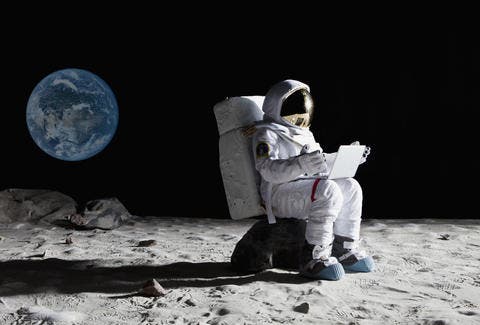Every ounce counts when sending cargo and people into space, which is why there’s a great deal of scrutiny for which items get launched. It goes without saying that astronaut food isn’t the tastiest, however, it’s not the most plentiful, either. But what if we could make the most of it by… recycling what hasn’t been digested? A team at Penn State is looking into converting solid and liquid human waste back into food, and their results, so far, are quite promising.
From poop to food
One man’s trash is another man’s treasure. In nature, nothing goes to waste — not even the so-called ‘waste’ itself. Here on Earth, various microbes and insects consume the waste of larger creatures for sustenance only to become food themselves, sometimes for the same type of creatures that fed them earlier. It’s a food cycle that works very well, and scientists would like to implement a similar system in space.
There are good reasons for this: besides saving money (it costs $10,000/lb to launch cargo into space), manned long-term missions, such as a trip to Mars, require either producing food on the spot (the spaceship) or managing food as efficiently as possible. Recycling food waste back into food is thus very appealing, though perhaps far from delicious. What’s more, you still have to do something with all of that waste — you can’t simply dispose of it with a toilet. On the International Space Station, solid waste is stored and then carefully ejected into Earth’s atmosphere, which ends up being quite a hassle.
To mimic the natural ecology, Penn State researchers propose treating solid and liquid waste with microbial species that produce edible biomass, either directly or indirectly (requiring treatment).
“It’s a little strange, but the concept would be a little bit like Marmite or Vegemite where you’re eating a smear of microbial goo,” said Christopher House, professor of geosciences at Penn State, in a statement.
Waste was placed into bioreactors whose design was inspired by aquarium waste filters. Instead of real human waste, the researchers used artificial solid and liquid waste, the kind employed in tests for waste management systems.
“We used materials from the commercial aquarium industry but adapted them for methane production,” says House. “On the surface of the material are microbes that take solid waste from the stream and convert it to fatty acids, which are converted to methane gas by a different set of microbes on the same surface.”
Along with the waste, the researchers introduced microbes like Methylococcus capsulatus, which on Earth are able to consume waste through anaerobic digestion. This species is particularly efficient at converting waste into food, and can turn it into about 52 percent protein and 36 percent fat. About 50 percent of the solid waste sample was converted into food after 13 hours in the reactor.
Now, there’s a reason why humans are disgusted with poop. We’re evolutionarily tuned to stay away from it since it harbors pathogens. There are numerous infections of all different types that can be communicated through feces. Just to give you some examples, bacterial infections that can be transmitted include cholera, diarrhea, salmonella or shigella; viral infections that are transmitted fecally include rotavirus, norovirus (which causes food poisoning on cruise ships), and hepatitis A and E. There are also parasites such as giardia and cryptosporidium, and various different kinds of worms including pinworms, ascariasis, and tapeworms.
To get around this hazard, the team grew their desired microbes in high temperature and high alkaline conditions that are hostile to most pathogens. They found some promising strains like the Halomonas desiderata bacteria, which can withstand a pH level of 11, and produced 15 percent protein and 7 percent fat. Thermus aquaticus, which can survive 158º F (70⁰ C), produced 61 percent protein and 16 percent fats.
“Imagine if someone were to fine-tune our system so that you could get 85 percent of the carbon and nitrogen back from waste into protein without having to use hydroponics or artificial light,” says House. “That would be a fantastic development for deep-space travel.”
But although these initial findings are very promising, House says that his system isn’t ready for applications yet as the study only explored the various components in isolation, rather than a fully integrated system.
“Each component is quite robust and fast and breaks down waste quickly,” he said. “That’s why this might have potential for future space flight. It’s faster than growing tomatoes or potatoes.”
If poop-to-food conversion ultimately fails, there are other practical uses for human waste. One of the most immediate threats astronauts face on a mission to Mars, for instance, is deep space radiation. Previously, scientists have proposed lining the inner walls of a spaceship with the crews’ own feces, which apparently is a great insulator against radiation.
Findings appeared in the Life Sciences in Space Research journal.










